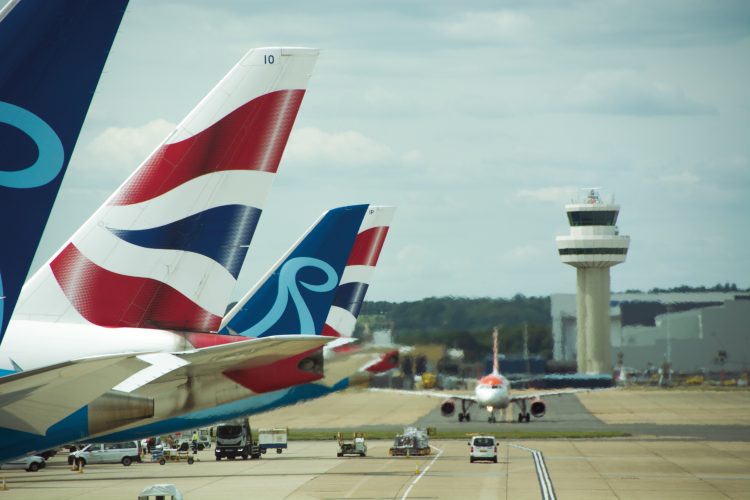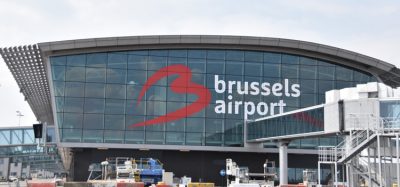Intelligent Approach sets new standard for single-runway airport efficiency
Posted: 18 August 2025 | Leidos | No comments yet
Leidos explores how London Gatwick became the first single-runway airport to deploy Advanced Mixed Mode, boosting efficiency, cutting delays and reducing emissions.


London Gatwick has become the first single-runway airport in the world to implement Advanced Mixed Mode (AMM) – a major new enhancement to Intelligent Approach, a world-leading aircraft separation tool developed by NATS and Leidos.
As the world’s busiest single-runway airport by hourly movement rate, Gatwick joins a growing family of airports benefiting from the Intelligent Approach suite, which is already in use at major hubs including Heathrow, Toronto Pearson, and Amsterdam Schiphol.
“Advanced Mixed Mode is designed to increase capacity and efficiency for single-runway operations, while also reducing airborne holding especially in strong wind conditions.” said Graham Emmons, Managing Director, Civil at Leidos UK & Europe
Join us live: Shaping the Next Generation of Hold Baggage and Air Cargo Screening
Join us live for an insightful webinar on 11th December at 14:00 GMT, in collaboration with Smiths Detection, as we explore the strategic balance of operational efficiency, regulatory compliance, and sustainability in high-volume security environments.
This session offers a focused look into future-proofing your security strategy.
Key learning points
- Cost Reduction: Strategies to minimize bag travel time while simultaneously reducing operational costs.
- Regulatory Roadmap: Insights into the next wave of regulatory changes and their impact on future investment decisions.
- Sustainable Systems: Practical approaches to building sustainability into security systems and lowering the total cost of ownership (TCO).
- Scalable Solutions: Real-world examples of scalable systems supporting current airport growth and preparing for tomorrow.
Register now for expert insights, case studies, and actionable strategies on operational efficiency!
Smarter Spacing, Less Delay
Single-runway airports typically schedule fixed gaps, often 5 to 6 nautical miles, between arriving aircraft to allow space for departures. In high headwinds, these fixed gaps can lead to extended airborne holding, delays, and even cancellations as inbound aircraft take longer to reach the runway.
The AMM module is designed to address this by replacing fixed separations with time-based intervals that are automatically adjusted in real time based on live wind conditions. This dynamic spacing helps air traffic controllers to safely maintain optimal arrival and departure rates, even during strong headwinds – with the goal of minimising disruption and improving runway throughput.
Delivering Operational and Environmental Benefits
Since going live earlier this year, AMM is already delivering significant performance gains. The system aims to reduce CO₂ emissions by up to 18,800 tonnes annually by reducing both airborne holding and ground delays. That could translate into over £3.2 million in annual fuel savings for airlines, based on IATA’s March 2025 jet fuel prices.
Intelligent Approach has already demonstrated its value at Heathrow, where it reduced headwind-related delays by 62%. Now, Gatwick marks the first deployment at a single-runway, mixed-mode airport, where both arrivals and departures share the same runway. For this environment, AMM has been specially adapted to account not only for real-time wind conditions, but also for departure slot requirements – helping controllers manage traffic with increased accuracy using live markers on their radar displays.
“Early feedback from Gatwick controllers has been overwhelmingly positive,” said Emmons. “It’s been exciting to see how quickly and confidently they’ve adopted the system and the tangible benefits it’s already delivering.”
Shaping the Future of Air Traffic Management
The rollout of AMM at Gatwick represents a significant development in air traffic management for single-runway airports worldwide. By combining real-time data, automation and human expertise, Intelligent Approach with AMM is designed to advance efficiency and sustainability – without the need for additional infrastructure.
“There are numerous airports around the world operating with a single runway,” said Emmons. “AMM has the potential to take their performance to the next level.”
To find out more head to Leidos.com
Join our free webinar: Revolutionising India’s travel experience through the Digi Yatra biometric programme.
Air travel is booming, and airports worldwide need to move passengers faster and more efficiently. Join the Digi Yatra Foundation and IDEMIA to discover how this groundbreaking initiative has already enabled over 60 million seamless domestic journeys using biometric identity management.
Date: 16 Dec | Time: 09:00 GMT
rEGISTER NOW TO SECURE YOUR SPOT
Can’t attend live? No worries – register to receive the recording post-event.
Related topics
Air traffic control/management (ATC/ATM), Airside operations


















